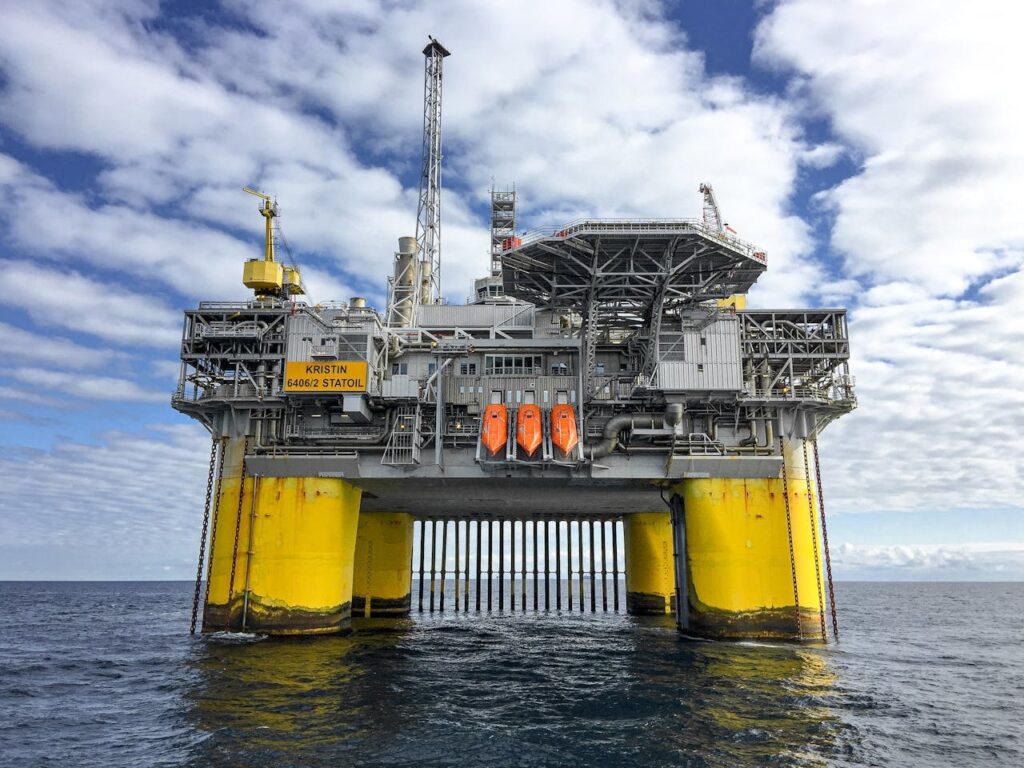Multiple major technical improvements have made deep offshore technology operations more effective throughout the years. Modern technological systems perform two operational functions: reducing safety risks and developing safer processes, which lead to better operational results. The representation of technological progression with its effects on offshore manufacturing production needs a visual explanation. Several important changes have taken place.
-
- Seismic Imaging and Exploration: Geologists are better able to locate reservoirs through seismic imaging, which reduces the possibility of dry well exploration efforts. The ability of businesses to obtain detailed representations of ocean floor structures is improved by the modern seismic mapping tools 3D and 4D surveys.
- Drilling Rigs and Equipment: The deepwater drilling industry conducts its operations through specialized equipment and vessels that demonstrate two main features: resistance to fluid pressure as well as durability for cold temperatures and salty underwater surfaces. Deepwater drilling operations depend on the activities of semi-submersible rigs alongside drillships. The ocean-floor-anchored floating rigs maintain a position above water levels. The position of drilling resources and their precise configuration become possible through engineering systems that are installed in the rigs. Modern technological innovation enables businesses to obtain new drilling equipment systems that perform deepwater operations.
- Subsea Production Systems: At present, there is no requirement to utilize extensive surface platforms to extract seabed mineral deposits from underwater facilities. The installation depth of wellheads and manifolds as well as pipelines provides all operations within subsea technology.
- Floating Platforms: Ships are used as major carriers through their FPSO system, which includes storage units and processing components to separate extracted oil from gas and water while storing gathered resources. Since building permanent platforms is impractical due to the great distance of offshore areas, FPSOs are the answer. These units are very versatile, making it simple to move them from one place to another.
- Robotics and Automation: Operations became safer while achieving better effectiveness because robotic systems operated together with automated technology. Underwater robotic systems consisting of ROVs and AUVs perform basic duties that extend to pipeline inspection and equipment maintenance together with other pivotal tasks.
- Challenges of Deep Offshore Technology: The statistical evidence in the displayed graph demonstrates that sector challenges affect the sector. Many widespread obstacles prevent the successful operation of the offshore sector.
- High Costs: Costs for deepwater drilling operations run extremely high. Deepwater oil field development consumes funds that amount to billions of dollars. Each deepwater exploration operation costs more than $100 million, and full-field development initiatives need tens of billions of dollars, thus making deepwater oil and gas exploration well drilling highly expensive. Offshore developments experience significant price volatility in petroleum because these projects bring high implementation expenses. The graphic shows that reduced petroleum prices lead to more expensive operations which reduce the number of offshore development activities.
- Technical Complexity: Strong currents, high-pressure zones, and bitterly cold temperatures make it very difficult for humans to navigate deepwater regions of the ocean. Because engineers work in extremely difficult environments, designing protective gear for safe oil extraction is difficult. In this difficult environment, system failures brought on by equipment malfunctions would result in extremely high costs and decreased operational performance. According to the provided illustration, the primary cause of delayed performance in deep offshore project completion rates is equipment malfunctions.
- Environmental Risks: Deepwater drilling oil spills create the most environmental threats because they adversely affect ocean habitats while disrupting marine life populations. The Deepwater Horizon disaster from 2010 exhibited all the risks involved with offshore drilling operations. The existing regulations for deep offshore safety protection cannot fully prevent accidents from happening. Every business entity must present visual representations of environmental risk management plans despite ongoing environmental threats.
- Regulatory Hurdles: The transition between regional framework standards involving new compliance requirements leads operations-related organizations to spend additional funds while allocating enhanced resources. The illustration demonstrates how deepwater field development expenses change when companies add new regulations to their operational framework.
Future of Deep Offshore Technology
Proof of sector progression resides in new developments during this period of ongoing challenges in the deep offshore technology sector. The usage of future indicators in the graph provides evidence for my analysis of industrial development trends.
- Digitalization and Big Data: The combination of IoT systems along with AI capabilities offers value to present operations of deep offshore drilling. The implementation of predictive maintenance systems and data monitoring has become feasible through a single decision support network enabled by modern technological solutions. The utilization of data optimization methods by businesses creates operational efficiency that leads to decreased expenses. Visual representations show how digital technology advances efficiency rates during deep offshore project executions.
- Renewable Energy Integration: Platforms at sea are where renewable energy systems are most commonly used. Equipment for offshore wind farms was first developed using submerged systems and oil and gas industrial platforms. Because they aim to create long-lasting electricity production solutions for contemporary society, renewable energy companies continue to choose offshore platforms as their primary locations for electricity generation.
- Enhanced Recovery Techniques: Offshore wind farm equipment development started through the union of petroleum company pre-existing technology with underwater systems and floating platforms. Sustainable power generation requirements from society drive renewable energy organizations to establish their power generation systems on offshore platforms.
- Global Expansion: Since other regions started appearing, the deep offshore petroleum industry primarily functioned in the Gulf of Mexico and West African waters alongside Brazil. Australia, Guyana, and Mozambique allocate major funds for deepwater exploration together with production activities. Representations of deep-ocean exploration as it extends into previously unexplored offshore locations should be added to the illustration.
Conclusion
Deep offshore technology is the basis for obtaining vital energy in response to the growing global energy demands. The sector developed knowledge to overcome barriers to extracting petroleum from beneath marine layers.

